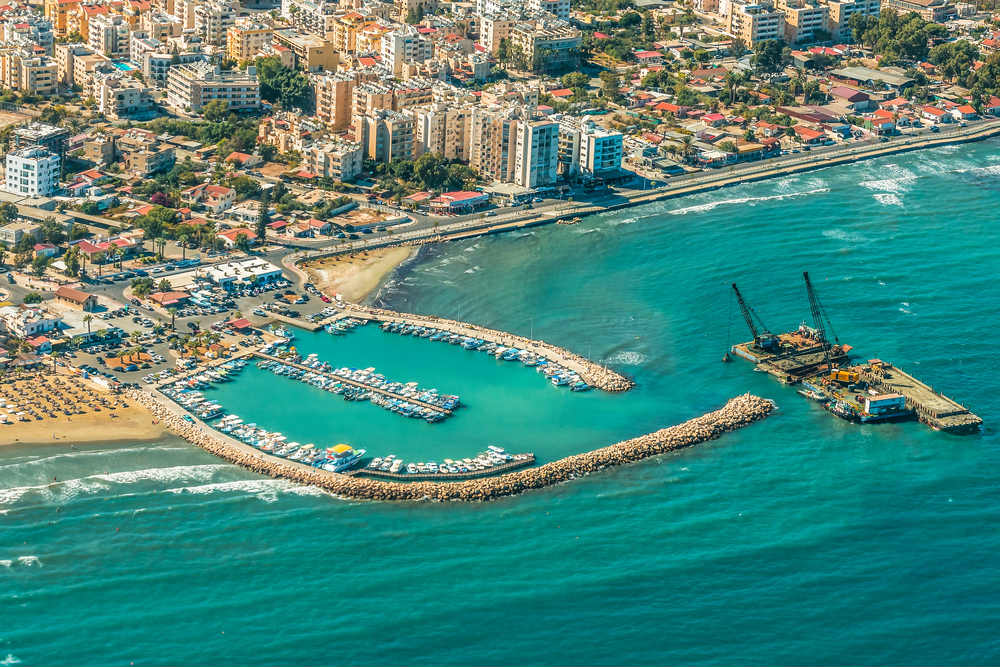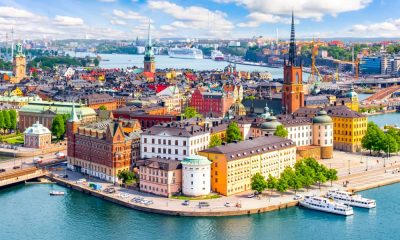Travel
Best Places To Visit In Cyprus (Europe) In 2024

Cyprus continues to expand as a year-round tourism destination, cementing its status as an island nation with spectacular weather, attractive beach resorts, and fascinating historic monuments.
This island mixes Mediterranean culture and cuisine with a very laid-back way of life, providing tourists with the ideal vacation mix of pristine beaches, characterful resorts, and vibrant nightlife.
The capital, Nicosia, is the country’s cultural epicenter, while Paphos is its historical historic center, with remains reaching back centuries. There are also several beautiful beaches to enjoy.
The Troodos Mountains offer an escape into the wilderness with picturesque villages, hiking trails and even ski slopes, while Limassol and Larnaca provide a relaxed beach resort alternative away from the party-centric town of Ayia Napa.
1. Paphos

Paphos remains one of the country’s most popular tourist attractions, with beautiful weather all year that allows you to enjoy the Mediterranean promenade and beaches such as Aphrodite’s Rock, Coral Bay, and the Blue Lagoon.
The city itself consists of a picturesque old town (packed with colorful architecture, outdoor eateries, and stunning harbor views), a plethora of adjacent ancient ruins, a vibrant nightlife scene, and excellent day trip choices such as vineyard tours or excursions to other local towns.
Tourist attractions include the Kato Paphos Archaeological Park and its numerous remains, which range from villas and mosaics to a 4th-century acropolis and the Odeon, an outdoor theatre, as well as the Chrysorrogiatissa Monastery and the Harbour Castle.
Where to Stay?
The Alexander the Great Hotel is a beautiful seaside resort just minutes from Paphos harbor. It combines old-world grandeur with modern accents, from the lavish decor to the modern spa and five dining options, and includes four swimming pools, a fitness center, and a terrace with one of the best sunset views in town.
2. Nicosia

The capital is a spectacular display of Cypriot history, with Venetian, Ottoman, and Byzantine architecture evoking the city’s difficult past. The skyline is characterized by russet-tiled roofs and walls of white and honey, with an old town enclosed by 16th-century Venetian city walls, charming squares such as the freshly restored Plateia Eleftherias, and picturesque neighborhoods like the Chrysaliniotissa Quarter or Laïki Geitona.
Cyprus is divided in two by the UN-administered Green Line, which runs through the country’s capital. The north and south of the city are divided into Greek Cypriot and Turkish Cypriot communities, and the area along the line is an excellent place to study about recent Cypriot history.
Today, the city’s many churches, mosques, and the Hamam Omerye hammam still include remnants of Ottoman and Byzantine culture. The main churches are Archangelos Michail and Agios Ioannis, with the Omeriye Mosque standing out as an operating mosque open to non-Muslim visitors. The Shacolas Tower Observatory offers the greatest views of both sides of the city.
Where to Stay?
Choose the Djumba Hotel and Cafe for a boutique hotel experience in Europe’s final divided capital. It mixes ancient Cypriot architecture and hospitality with a Mediterranean flair, offering comfortable and modern accommodations, a courtyard and patio, and delicious local cuisine.
3. Limassol

Limassol is a busier, more cosmopolitan alternative to Paphos and Larnaca. It is the island’s second-largest city, with a lovely marina and beaches such as Lady’s Mile, Dasoudi Beach, and Governor’s Beach, which provide safe swimming.
The city, which extends back from the shore, is a collection of white-washed buildings that line cobbled limestone streets, with a mix of high-rise buildings and conserved heritage landmarks. Limassol Castle, Kolossi Castle, and the 2,000-year-old ruins at Amathus are among the older historic landmarks, and you may also see the ancient ruins of Kourion, which was once one of the island’s most prominent city-kingdoms.
Where to stay
The S Paul City Hotel benefits from a seaside location that is also within the city’s historic centre, meaning guests can pair beach visits with easy strolls through the old town. Interiors here fuse the modern with the traditional in a series of 22 minimalist rooms housed within an 19th-century stone building, and guests can enjoy easy access to the bar and its two restaurants.
4. Troodos Mountains

This mountain range shows a different side to Cyprus, with quiet mountain villages surrounded by dense pine forest and medieval churches sitting alongside historic monasteries. Cooler temperatures allow for summer hiking and, in the winter months, you can even go skiing on the slopes of Mount Olympus, Cyprus’s tallest peak.
The main settlement here is Troodos village, which sits just under Mount Olympus, and this is the best base for tourists. Some of the most desirable villages to visit include Fikardou, Pedoulas and Agros, all of which are well-preserved and filled with churches and russet-roofed buildings that hug the verdant hills. Hiking trails in the area to check out include the Caledonia, Millomeris and Artemis.
Where to stay
The Troodos Mountains are full of traditional villages and accompanying hotels, but the Casale Panayiotis combines a picturesque mountain setting with modern amenities and traditional Cypriot touches. It is located in the town of Kalapanayiotis, and is set in a series of traditional houses that contain contemporary rooms with period features. The Byzantino restaurant serves traditional cuisine, while guests can enjoy use of a spa, swimming pool and large courtyard.
5. Larnaca

Larnaca lies along the southern coast of Cyprus, just east of Paphos and Limassol, so benefits from much of the same great weather and superb beaches. Standouts are Makenzy, Finikoudes, Kastella and Dhekelia.
Larnaca is probably less glamorous than its resort town neighbours, but has a solid tourist infrastructure and enough sites to keep you occupied over a long weekend (if you decide you want to leave the beach). The Leoforos Athinon is the main thoroughfare, linking the marina with Larnaka Fort – it’s lined with plenty of hotels and restaurants. Many of the city’s main sites are close by, including the Agios Lazaros (a 9th-century church), the museums of natural history and archaeology and the site of Ancient Kition, an ancient Greek city-kingdom.
Half a day can also be spent exploring areas like the Turkish Quarter, or experiencing the phenomenal scuba diving on the Zenobia, one of the best wrecks in the world. The towns of Protaras and Ayia Napa are also both within easy reach.
Where to stay
The Lokàl provides a boutique hotel stay in the heart of Larnaca, just minutes away from the city’s main attractions. A family-run hotel with a distinctly homely feel, it lies just 300 metres from Foinikoudes Beach and offers its own rooftop terrace pool, along with a bar and modern Mediterranean bistro.
6. Protaras

Protaras offers more of a laid-back, family-friendly alternative to the well-known party atmosphere of Ayia Napa. It is smaller too, stretching from Fig Tree Bay in the south to Trinity Bay in the north (just over 10 minutes’ drive up the coast). There are plenty of other bits of attractive coastline too, including the blue glag beaches of Konnos Bay and Pernera.
Many of the activities in Protaras are aimed at families, with mini-golf courses, amusement arcades and the Ocean Aquarium all within easy reach. The Konnos Nature Trail offers opportunities for hiking, while Cape Greco is the place to go for the best coastal views. The Church of Profitis Ilias, perched on a hill overlooking the coast, offers one of the most scenic views in town.
Where to stay
Sunrise Jade is an adults-only oasis on the beachfront in Protaras. It is centred around its two large outdoor pools and the accompanying elegant terrace. Rooms are minimal with muted tones, and some come with direct access to their own small private pool.












